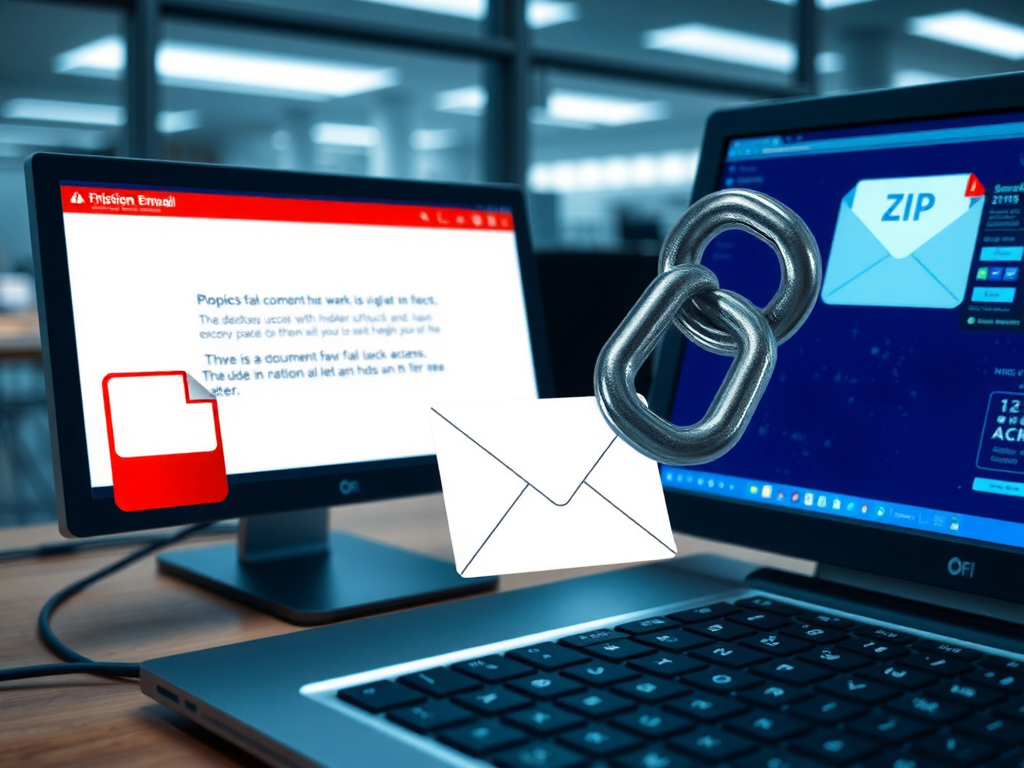Threat Report
LNK MALWARE STRATEGIES A detailed analysis of Windows Shortcut (LNK) malware strategies and their implications.
Threat Overview
Windows Shortcut (LNK) malware is a sophisticated threat that leverages the legitimate functionality of LNK files to execute malicious payloads. These files are commonly used in phishing attacks, where they masquerade as harmless shortcuts to trick users into executing them. Once executed, these LNK files can download and run additional malware, steal sensitive information, or provide remote access to attackers.
Detailed Analysis
LNK malware strategies involve the use of Windows Shortcut (.lnk) files to execute malicious code on a victim’s system. These shortcuts are often embedded within compressed archives like ZIP files or attached to emails, making them appear legitimate and increasing the likelihood that users will open them.
Technical Breakdown
LNK malware typically operates in several stages:
- Initial Infection: The attacker creates a malicious LNK file that points to an executable or script. This file is then distributed through phishing emails, malicious websites, or other social engineering tactics.
- Execution: When the user clicks on the LNK file, it triggers the execution of the associated payload. This can be a PowerShell script, a batch file, or an executable that downloads additional malware from a remote server.
- Payload Delivery: The initial payload often includes code to download and execute further malicious software. This secondary payload can include ransomware, keyloggers, or backdoors that provide persistent access to the attacker.
- Data Exfiltration: Once the malware is established on the system, it can begin exfiltrating sensitive data such as login credentials, financial information, or intellectual property. This data is then sent back to the attacker’s command and control (C2) server.
Common Tactics Used by LNK Malware
LNK malware employs various tactics to evade detection and increase its effectiveness:
- Obfuscation: The malicious code within the LNK file is often obfuscated to avoid detection by antivirus software. This can include encoding the payload or using complex scripting techniques.
- Living Off the Land: Attackers use built-in Windows tools and scripts (like PowerShell) to execute their malware, making it harder for security solutions to detect anomalous behavior.
- Phishing Campaigns: LNK files are frequently distributed through phishing emails that appear to come from trusted sources. These emails often contain urgent or enticing messages to encourage users to open the attachments.
Specific Strategies and Examples
Several specific strategies have been observed in recent LNK malware campaigns:
- Technique 1: Embedded Scripts: Some LNK files contain embedded scripts that execute when the shortcut is clicked. These scripts can download additional payloads or perform actions like disabling security software.
- Technique 2: Icon Manipulation: Attackers manipulate the icon of the LNK file to make it appear as a legitimate document or application, increasing the likelihood that users will click on it.
- Technique 3: Multi-Stage Payloads: The initial payload downloaded by the LNK file may be a downloader that fetches additional stages of malware. This approach makes it harder for security tools to detect all components of the attack.
Mitigation Strategies
To protect against LNK malware, organizations can implement several mitigation strategies:
- User Education: Train employees to recognize phishing attempts and avoid clicking on suspicious links or attachments. Regular security awareness training can significantly reduce the risk of successful attacks.
- Email Filtering: Use advanced email filtering solutions to block phishing emails and malicious attachments before they reach users’ inboxes.
- Endpoint Protection: Deploy endpoint protection solutions that can detect and block LNK malware. These solutions should include behavior-based detection capabilities to identify suspicious activities.
- Network Segmentation: Implement network segmentation to limit the lateral movement of attackers within the network. This can help contain the impact of a successful attack.
- Regular Updates: Keep all systems and software up to date with the latest security patches. Regular updates help address known vulnerabilities that can be exploited by malware.
Conclusion
LNK malware poses a significant threat due to its ability to exploit legitimate Windows functionality for malicious purposes. By understanding the tactics used by attackers and implementing robust mitigation strategies, organizations can significantly reduce their risk of falling victim to these sophisticated threats.


